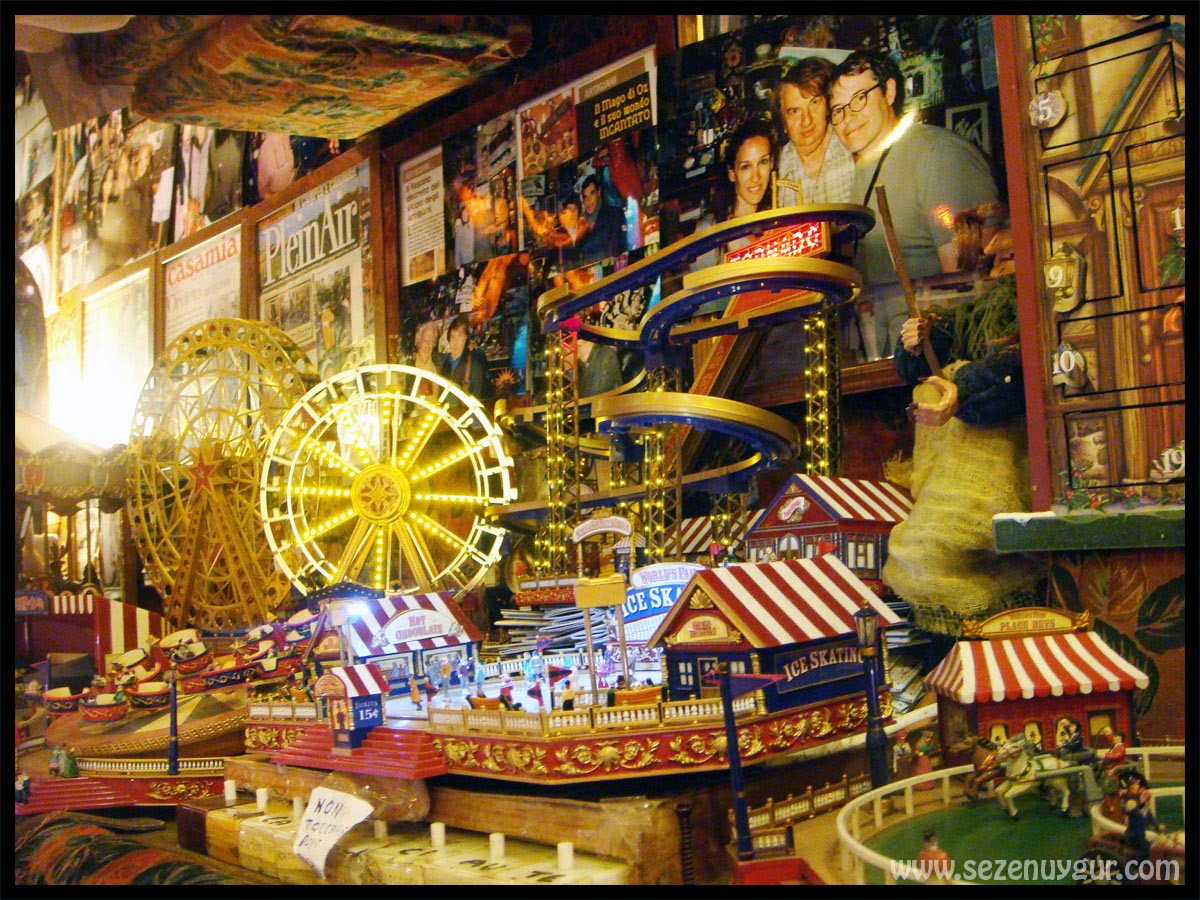You can spend a lot of money in the high-fashion shops that have taken over every space on Orvieto's main drag, Corso Cavour, as well as every other narrow, cobbled alleyway that branches organically off it. These medieval corridors defy any concept of "grid," making it very easy to get lost and follow endless circles in Orvieto. This is part of the place's magic. The labyrinth leads you where you need to go.
Of course it would. Here's the explanation. A miracle was proclaimed here in 1263, after a skeptical German priest questioned that the consecrated host was truly the body of Christ. While the priest celebrated Mass in the nearby town of Bolsena, no sooner had he uttered the consecration than the host began to bleed, dripping onto the altar cloth. Proclaimed the Miracle of Bolsena, the cloth is still enshrined in the Duomo of Orvieto.
Like Starbucks in New York City and Dunkins in Boston, there must be at least four United Colors of Benetton within three blocks of our apartment. Orvieto thought I needed a few items there, so I obliged.
 |
| Even Bill seemed, for a moment, enchanted with this smart jacket. He needs something suitable to wear to his youngest daughter's wedding in April. This could be it. It comes complete with boutonniere! |
When we first passed one shop, we assumed it was under construction. I hesitated to go in. It looked like a work in progress, a reconstruction after an earthquake. Huge curls of sawdust covered the floor and the interior. Furniture and handbags were scattered randomly among wrapped bales of hay. But many things had price tags on, so some business must be afoot here. It was a puzzle.
In fact, it was Bottega Michelangeli.
 |
| This unique storefront, with no sign of human attendants, may be the only brick-and-mortar portal for customers. The workshop itself is in a nineteenth-century theater. The storefront probably works its uniquely subtle marketing magic by intriguing clients so much that they will seek out Bottega Michelangeli online, as I did. |
Like many other parts of Orvieto, this shop is a marriage of the traditional and the ultramodern, the product of five generations of a woodworking family. One of its website's historic photos shows a woodworker's bench with a carafe and two glasses off to one side, Its website describes its work as "a combination of alchemical experience and creativity," in which the spirit of all carvings, products, interior design, and architecture is allowed to emerge. Picture a flat, wood-carved form of Italian marble sculpture, Marcus Aurelius on a Trojan horse. They've also branched out into a third dimension, doll making, but the three young Italian women captured in a photograph with one of their rounder creations appear to be apprehensive that it might come to life. Too much alchemy can be a powerful thing.

Some side streets seem devoted to particular trades, as you'd expect in a medieval town. For example, there is what I'd call Street of Artisans, off the right-hand side of Via Duomo, on Via dei Magoni. One might think this means Street of Wizards, because of its most prominent shop, Mago di Oz, but no, this was originally Street of
Gizzards. Given the limited demand for gizzards these days, never mind the need for a whole street devoted to them, artisans have set up shop here. Surely the most unique of these is Giuseppe Rosella, who calls himself Il Mago di Oz (the Wizard of Oz) yet will completely miss the reference "We're not in Kansas any more." No matter. The Betty Boops throughout his shop, the Oz references, the frilly masks, and the over-the-top flamboyance of the displays all make their point in Orvieto's own subtle, magical way. It is said that if you touch any part of the shop, all the toys will begin to play, and when you wave your hands, they will fall silent.
 |
"Sono io!"
Giuseppe's shop has been a required stop for years of celebrity tourists, and he was proud to point out that Rick Steves's guidebook profiles him.

|






No comments:
Post a Comment